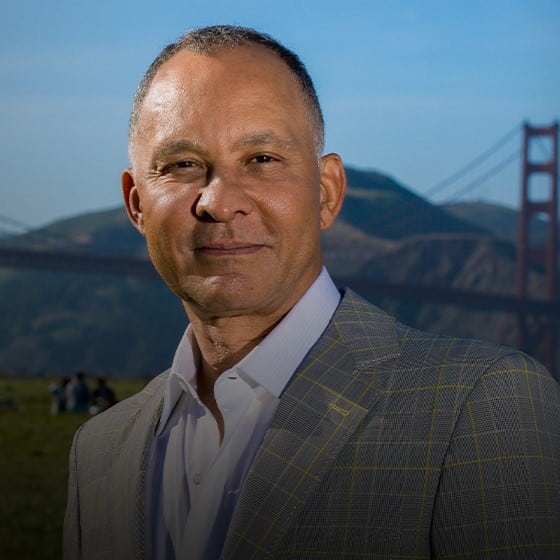Is It Possible to Get Rid of Gynecomastia with Exercise in 2023?

Are you struggling with the embarrassing appearance of enlarged male breasts, commonly known as “man boobs”? Have you tried various exercises in the hopes of reducing them, but to no avail? This comprehensive blog post will provide a fresh perspective on gynecomastia and answer the question, “is it possible to get rid of gynecomastia with exercise?” We’ll also explore the importance of understanding the difference between true gynecomastia and pseudogynecomastia, as well as delve into the various treatments available for both. Get ready to gain new insights and take control of your chest!
Short Summary
- Gynecomastia and pseudogynecomastia are distinct conditions with different causes.
- Exercise, nutrition and lifestyle changes can help reduce the appearance of enlarged breasts associated with gynecomastia by fat reduction.
- Professional help should be sought to manage psychological effects of gynecomastia.
Understanding Gynecomastia and Pseudogynecomastia

Gynecomastia, a hormonal condition causing enlarged male breast tissue, and pseudogynecomastia, a condition caused by excess fat in the chest area, are often mistakenly used interchangeably. However, they are distinct conditions with different underlying causes, and understanding the difference between them is crucial for effective treatment.
While gynecomastia is a hormonal disorder resulting in enlarged breast tissue, pseudogynecomastia is caused by a surplus of fat in the chest area. Surgery or medication are suggested as the most effective treatments for gynecomastia, but these treatments differ from those used to treat breast cancer. For pseudogynecomastia, implementing a new fitness regimen and making dietary adjustments may be beneficial.
Causes of Gynecomastia
Gynecomastia may be caused by a variety of factors, including:
- Hormonal imbalances, such as an imbalance between estrogen and testosterone levels, can lead to the development of breast tissue in males.
- Certain medications, including certain drugs used to treat ulcers, heart conditions, and depression, can also contribute to gynecomastia.
- Obesity can increase the risk of developing gynecomastia.
- Specific medical conditions, such as liver or kidney disease, can also be a factor in the development of gynecomastia.
Other potential causes of gynecomastia include medical conditions like liver disease, kidney failure, and hyperthyroidism. Accurate diagnosis is essential to determine the root cause of gynecomastia and choose the most appropriate treatment approach.
Causes of Pseudogynecomastia
Contrary to gynecomastia, pseudogynecomastia is characterized by enlarged male breasts caused by an accumulation of fatty tissue rather than glandular tissue. The primary causes of pseudogynecomastia are usually excess fat accumulation in the chest area, which can be attributed to obesity or an inadequate diet.
Since the underlying cause of pseudogynecomastia is different from that of gynecomastia, the treatment approach also varies. Lifestyle changes, such as engaging in regular exercise and adopting a healthy diet, are typically recommended to help reduce excess chest fat and improve the appearance of the chest area.
The Role of Exercise in Treating Gynecomastia

While exercise can be effective in reducing pseudogynecomastia by burning fat and building muscle, true gynecomastia requires medical intervention. However, incorporating specific exercises into your fitness routine can help reduce the appearance of enlarged breasts and improve your overall physical fitness.
Aerobic exercises and chest-focused workouts are the two primary types of exercises that can be beneficial in this regard. Aerobic exercises help burn overall body fat, while chest-focused workouts target the chest muscles, which can contribute to a more sculpted appearance. Both types of exercises can help tone the chest area, improve cardiovascular fitness, and, in the case of pseudogynecomastia, reduce the appearance of man boobs.
Aerobic Exercises
Aerobic exercises like swimming, sprints, and rowing machines can help burn overall body fat, improve cardiovascular fitness, and aid in managing pseudogynecomastia. These exercises not only help reduce chest fat, but also contribute to overall health and well-being.
One example of an effective aerobic exercise is the plank to push-up, which combines the benefits of planks and push-ups to stabilize the torso. For those new to exercise, it is recommended they start with three sets of 30 seconds each. This is a good way to begin building up strength and endurance. Incorporating aerobic exercises into your fitness routine can help manage pseudogynecomastia and promote a more toned chest appearance.
Chest-Focused Workouts
Chest-focused workouts like push-ups, bench presses, and cable flies can help tone chest muscles and reduce the appearance of man boobs. These exercises not only target the chest muscles but also engage other muscle groups in the arms, shoulders, and back, ultimately leading to a reduction in chest fat.
The bench press, for example, is an effective exercise for toning chest muscles. To perform a bench press, follow these steps:
- Lie flat on your back on a bench with hands wider than shoulder-width apart.
- On inhalation, bring the bar slowly down to the chest.
- Utilize a strong grip and exhale while pushing the bar back up.
Push-ups are a great way to work your upper body muscles. They engage the shoulders, triceps, and pectoral muscles in particular. Push-ups, particularly decline push-ups, are an effective exercise to target the chest muscles. They help to build strength and improve overall physical fitness. Incorporating chest-focused workouts into your fitness routine can help improve the appearance of the chest area and manage pseudogynecomastia.
Nutrition and Lifestyle Changes for Gynecomastia Management

Incorporating proper nutrition and making lifestyle changes are essential for managing gynecomastia, as they promote hormonal balance and reduce body fat. Here are some tips to help minimize the symptoms associated with gynecomastia and pseudogynecomastia.
- Follow a well-balanced diet rich in green tea, fresh fruits, vegetables, lean proteins, and complex carbohydrates.
- Engage in regular exercise to help burn excess fat and build muscle.
- Get adequate rest to support hormone regulation and overall health.
By following these tips, you can enhance the benefits of a healthy diet and lifestyle in managing gynecomastia.
In addition to incorporating healthy foods into your diet, it is also important to avoid foods that are high in sugar, unhealthy fats, and processed ingredients. These foods can lead to further fat accumulation, exacerbating the symptoms of both gynecomastia and pseudogynecomastia.
Foods to Include
A nutritious diet plays an integral role in treating gynecomastia and can help minimize its symptoms. It is recommended to include the following foods in your diet:
- Green tea
- Fresh fruits
- Vegetables
- Lean proteins
- Complex carbohydrates
These foods not only provide essential nutrients for overall health, but also support hormonal balance and fat reduction.
Maintaining a healthy lifestyle also involves avoiding processed foods, sugary drinks, and foods high in saturated fats. By incorporating these dietary changes, you can effectively manage gynecomastia and improve your overall health and well-being.
Foods to Avoid
To prevent further fat accumulation and worsening of gynecomastia symptoms, it is advisable to abstain from foods that are high in sugar, unhealthy fats, and processed ingredients. Consumption of these foods may lead to additional fat storage, which can exacerbate the symptoms of gynecomastia and pseudogynecomastia.
Some foods to avoid include:
- Processed foods
- Soy products
- Eggs
- Dairy products
- Beer
- Red meat
By eliminating these foods from your diet and incorporating healthier alternatives, you can better manage gynecomastia and support your overall health.
Medical Treatments for Gynecomastia
While exercise, nutrition, and lifestyle changes can help manage gynecomastia to some extent, true gynecomastia often requires medical intervention for effective treatment. Surgery, medications, and hormone therapy are viable options for treating true gynecomastia and can provide lasting results.
It is crucial to consult with a healthcare professional to determine the most appropriate treatment approach based on your individual needs and circumstances. Accurate diagnosis and treatment can help you achieve a more masculine appearance and improve your self-esteem and quality of life.
Gynecomastia Surgery
Gynecomastia surgery, also known as male breast reduction surgery, is a surgical procedure designed to reduce excess breast tissue and reshape the chest, addressing the issue of enlarged breasts in males. The surgery may involve either liposuction or excision, depending on the severity of the condition and the individual’s needs.
The benefits of gynecomastia surgery include increased self-esteem and a more masculine appearance. However, it is important to note that surgery is typically recommended for those who are healthy, have reached their desired weight, and have breasts that have finished developing.
Medications and Hormone Therapy
In some cases, medications and hormone therapy can help balance hormones and reduce breast tissue growth, providing relief from gynecomastia symptoms. Patches, injections, and topical gels are common forms of hormone therapy used to treat gynecomastia caused by low testosterone levels.
The efficacy of medications and hormone therapy in treating gynecomastia may vary depending on the individual. Some people may experience a reduction in symptoms, while others may not notice any change. It is crucial to discuss any potential side effects with your doctor before initiating any treatment.
Coping with the Emotional Impact of Gynecomastia

Gynecomastia can have a significant emotional impact on those affected, leading to feelings of embarrassment, self-consciousness, and low self-esteem. It is essential to address these emotional effects and develop healthy coping strategies to manage the condition and improve your quality of life.
Building a support system and seeking professional help are two effective strategies for coping with the emotional impact of gynecomastia. By connecting with others who understand your struggles and obtaining guidance from professionals, you can navigate the challenges of gynecomastia and develop a positive outlook on your situation.
Building a Support System
Establishing a support system is essential for addressing the emotional effects of gynecomastia. Such a system can help alleviate feelings of isolation and provide emotional reinforcement while managing the condition. Some sources of support for individuals with gynecomastia include:
- Friends and family
- Support groups
- Online forums
- Mental health professionals
These resources can provide the necessary support and understanding for individuals dealing with gynecomastia.
Having a support system can help you feel more connected and understood during your journey with gynecomastia. By sharing your experiences, challenges, and successes with others, you can gain valuable insights, encouragement, and advice that can help you better manage your condition and improve your overall well-being.
Seeking Professional Help
Obtaining professional assistance is essential for addressing the psychological repercussions of gynecomastia. A professional can offer direction and support to assist you in managing the condition and navigating the emotional challenges that may arise.
Therapists and counselors can help address self-esteem and body image issues related to gynecomastia, providing guidance and tools to improve your mental well-being. Seeking professional help can be an invaluable resource in your journey towards better managing gynecomastia and achieving a more positive outlook on your situation.
Summary
In conclusion, managing gynecomastia involves a combination of exercise, nutrition, and lifestyle changes for pseudogynecomastia, while true gynecomastia may require medical intervention like surgery, medications, or hormone therapy. Building a support system and seeking professional help are essential for coping with the emotional impact of gynecomastia. By taking control of your chest and addressing both the physical and emotional aspects of this condition, you can reclaim your confidence and live a healthier, happier life.
Frequently Asked Questions
Can gynecomastia be cured by workout?
Exercise can reduce the amount of fatty tissue in gynecomastia caused by weight gain, but it will have no effect on true gynecomastia which involves a combination of glandular and fatty tissue. Working out cannot cure true gynecomastia, with surgery or medication being the best options for an effective treatment.
Pushups, bench presses, or dumbbell butterflies will also not be sufficient to fully resolve the issue.
What is the difference between gynecomastia and pseudogynecomastia?
Gynecomastia is a hormonal disorder causing enlarged breast tissue, whereas pseudogynecomastia is an accumulation of fat in the chest area.
What types of exercises are recommended for reducing chest fat?
Exercises such as swimming, sprints, rowing machines, push-ups, bench presses, and cable flies are recommended for reducing chest fat.
What are the available medical treatments for gynecomastia?
Surgery, medications, and hormone therapy are effective treatments for gynecomastia.

